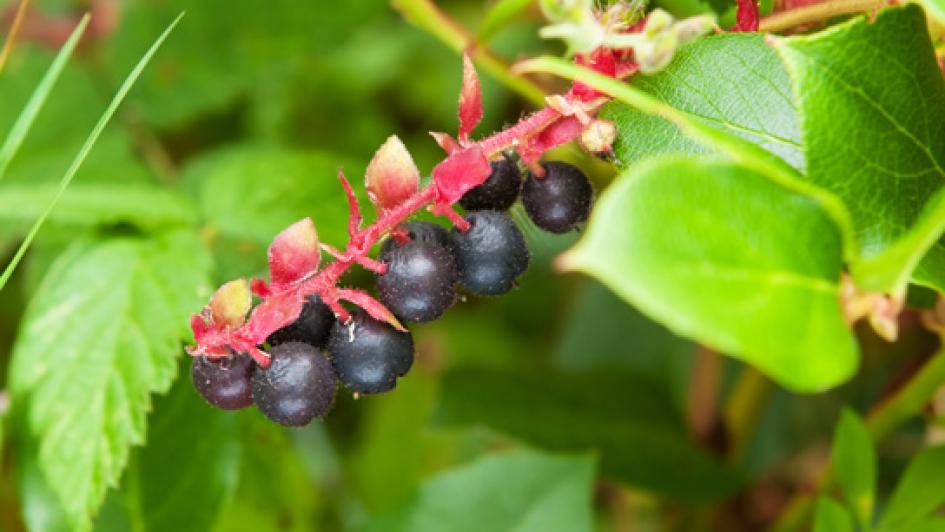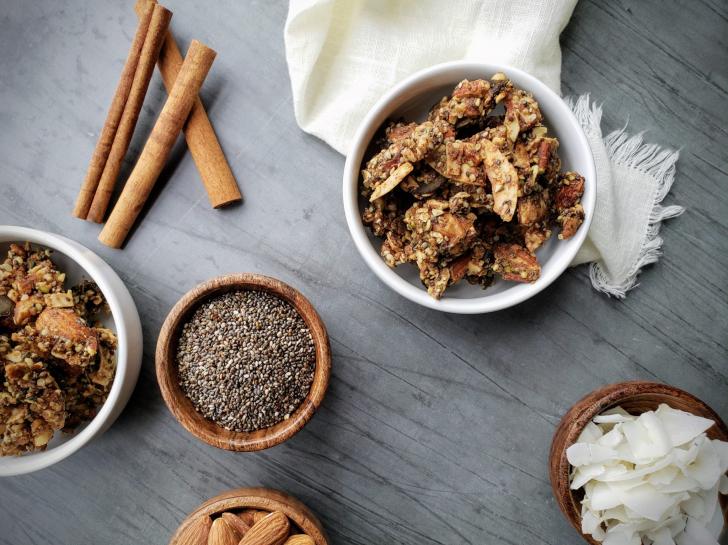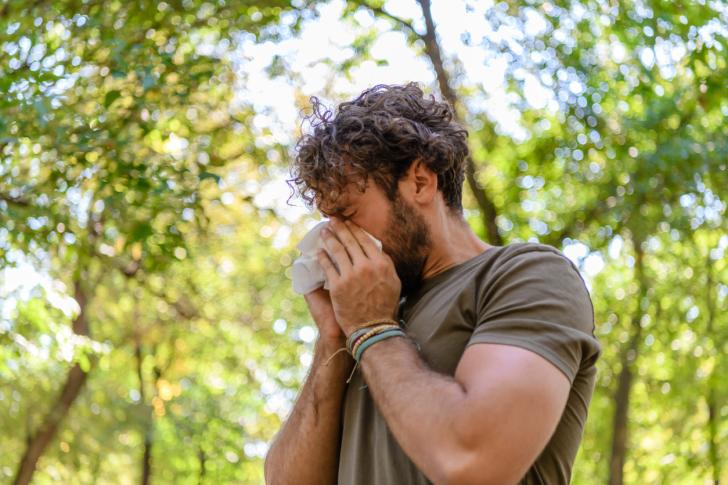Are Those Wild Berries for the Taking?

Published
Summer in the Pacific Northwest brings sunny days, gentle breezes and an array of wild berries ripe for the picking. In addition to the ever-popular blackberry, public parks, roadside thickets and backyard hedgerows offer up endless clusters of huckleberries, thimbleberries, salmonberries, Oregon grape and salal. These wild foods have always played an integral nutritional and medicinal role in the region’s Native American communities and have now become a seasonal treat for casual foragers of all backgrounds.
Some people find it difficult to resist plucking a perfectly ripe berry while passing a heavily laden bush, but others pause to wonder: Is this strange, how many people actually pick these? Are wild foods in urban and suburban areas safe to eat? What do these fruits actually contribute to my daily dietary needs?
Similar questions led Liz Diehl, who earned a Master of Science in Nutrition from Bastyr University in June 2016, to carry out an in-depth investigation of wild berry consumption in Western Washington. “I'm interested in wild foods, both how they are used and perceived by groups of people, and also what they may contribute to dietary and ecological diversity,” Diehl says. “Our food system is largely divorced from nature, but home-grown vegetables and wild foods are important exceptions with lots to offer.”
She began by surveying Western Washington park-goers, and found that nearly 80 percent of those surveyed had consumed wild berries in the past year, and that nearly half of those had preserved the fruit for use throughout the year. Although the majority of the park-goers who participated in the survey were white and of high socioeconomic status, wild berries such as salal offer a no-cost, nutrient-dense option for all individuals regardless of income or education.
Diel found that salal berries are rich in essential minerals and have flavanol concentrations comparable to the blueberries found at local grocery stores. Even in the midst of urban “food deserts,” public parklands and undeveloped lots can play a role similar to community gardens with their wild offerings. In addition to the nutritional benefits, Diehl notes in her study, “As a class of fruit, berries are known to be a rich source of polyphenolic compounds, some of which have relevant biological properties: anti-cancer, anti-inflammatory, and neuroprotective effects.”
Even with these potential health benefits, many are rightfully concerned that wild plants in industrialized urban environments may contain unhealthy levels of toxic substances or heavy metals. Berries collected from all research sites tested well below the government agencies’ maximum levels for all the investigated contaminants. While all samples were deemed safe, it should be noted that there were regional differences. If the foraging area is near possible sources of exposure/contamination, individuals should search for alternative sites.
Wild berries are part of the heritage, modern culture, landscape and informal economy of the Pacific Northwest. “I think that wild foods have the potential to deepen our connections to nature, but also to improve our relationships with food,” Diehl says.
As communities become more aware of their presence and benefits, these humble fruits could play an expanding role in fostering health in the region. Diehl’s study, “Wild Berries’ Contribution to Diet Diversity: Prevalence And Patterns Of Wild Berry Consumption Among Park Users And Chemical Analysis Of Gaultheria Shallon (Salal) Berry In Western Washington,” has provided the answers that many have needed to access this valuable community resource:
- It is not strange to pick them. The vast majority of park-goers do!
- Wild berries are good for your health!
- They are safe to eat. Why pay $5 a pint at the store?
Use an identification guide as well as common sense when choosing what and where you forage. Get out and enjoy the fruits of summer!
Liz Diehl's research was among the 45 student exhibits showcased in June 2016 at the annual Bastyr Student Research Symposium. Read more about the important role students play in research on the Bastyr University Center for Student Research page.


